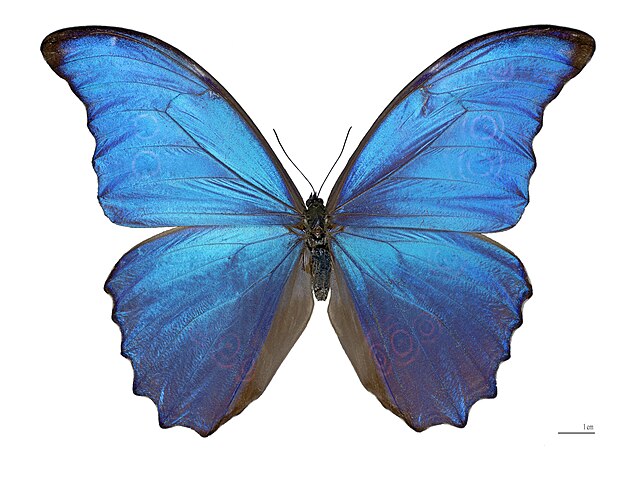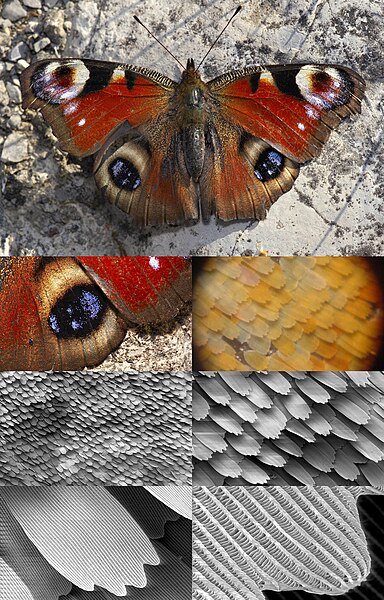The morpho butterflies comprise many species of Neotropical butterfly under the genus Morpho. This genus includes more than 29 accepted species and 147 accepted subspecies, found mostly in South America, Mexico, and Central America. Morpho wingspans range from 7.5 cm (3.0 in) for M. rhodopteron to 20 cm (7.9 in) for M. hecuba, the imposing sunset morpho. The name morpho, meaning "changed" or "modified", is also an epithet.
Blue morphos are severely threatened by the deforestation of tropical forests and habitat fragmentation. Humans provide a direct threat to this spectacular creature because their beauty attracts artists and collectors from all over the globe who wish to capture and display them. Aside from humans, birds like the jacamar and flycatcher are the adult butterfly’s natural predators.
Morpho (genus)
Iridescent colors of Morpho butterflies are caused by the specific nanostructures on their wings (SEM image at the bottom).
Atlantic Forest in Paraguay
Caterpillars
Structural coloration in animals, and a few plants, is the production of colour by microscopically structured surfaces fine enough to interfere with visible light instead of pigments, although some structural coloration occurs in combination with pigments. For example, peacock tail feathers are pigmented brown, but their microscopic structure makes them also reflect blue, turquoise, and green light, and they are often iridescent.
The brilliant iridescent colors of the peacock's tail feathers are created by structural coloration, as first noted by Isaac Newton and Robert Hooke.
In 1892, Frank Evers Beddard noted that Chrysospalax golden moles' thick fur was structurally coloured.
Electron micrograph of a fractured surface of nacre showing multiple thin layers
Butterfly wing at different magnifications reveals microstructured chitin acting as a diffraction grating








